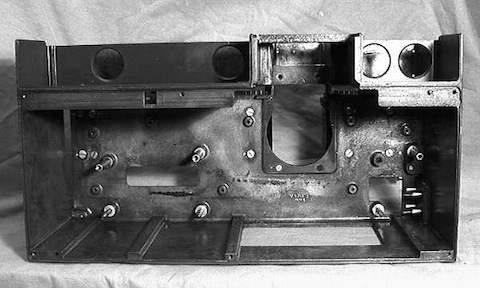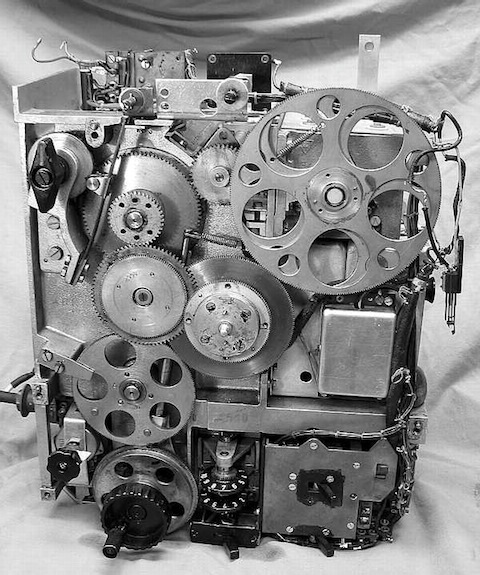THIRD REICH RADIO
Overview
Radio production in the Third Reich is almost entirely characterized to criteria of high efficiency and originality of the project, using minimum of components, all of the highest quality, that render in may cases the WWII German radio technology years ahead of all other countries.
Construction became modular and sectional. The standard 19-inch rack was invented and used for the first time. The Telefunken E52 Köln series of receivers were constructed with modules that plugged into a "motherboard" like present-day computers.
The major players in German Wireless communication industry, during the WWII, was:
1) Lorenz
2) Telefunken (owned at 50% by AEG)
3) Siemens & Halske
Modular Construction
Lorenz introduced the modular construction, with aluminum alloy chassis for the first time. Until then construction apparatus was built on frame construction in witch the entire electrical and electronic circuit was integrated. Subsequently the chassis moved all the way from the metal workshop up to calibration site at the end of the production line. It was soon released that this was a production bottleneck witch need to be removed.
The apparatus was engineered in order to be build by several modules that only at the final production stage were linked together via flat cables or motherboard.
Such modules could be sub sequentially be manufactured at most suitable production site, even be tested and calibrated at the location.
The delocalized production during the war was also very important in order to avoid that the destruction of one production site could interrupt the entree production line. The production was, during the war delocalized along the entire occupied territories
Another advantage of this solution is the improvement in serviceability. From technical point of view operation and maintenance was kept very simple, even for a regular service man, complete units or parts of it could be conveniently be changed in very little time, even by minimally trained personnel.
In the next picture is showed the Telefunken E52 Koln receiver aluminum chassis for contains the modules

E52b Koln receiver aluminum chassis (LA6NCA collection)
The modules was connected each other by a motherboard

E52 Koln receiver motherboard
Limited numbers of types valves
The opportunity to create a new standard in valves design persuaded the military organizations to reduce the numbers of valves types This also benefit to supply of spare parts. The most common types of valves used in the receivers were RV12P2000 and RV 2 P800.
New Types of Materials
The Esco Company develops new types of ceramic materials that didn’t contain iron and witch showed for that time very low RF losses. Also low loss titanium capacitors for temperature control became widely available
High Quality Mechanics
In Europe both Switzerland and Germany had a penchant for extensive use and fine mechanical contractions. In the following picture the beautiful tuning mechanics of the receiver Fu.H.E.c (Funkhorch Empfänger-c)

Receiver Fu.H.E.c (LA6NCA collection)
Bibliography
- Umberto Bianchi : “RadioSurplus Ieri e Oggi” Edizioni CD Bologna 1982
- Arthur O. Bauer : “The significance of German electronic engineering in the 1930s” Foundation Center for German Communication and related Technologies. (This is the best source for these arguments)
- Giovanni Longhi IN3LGH “Torn EB” CQ Elettronica magazine N° 128 June 1983